
Digital Marketing activities today are essential for E-commerce sites to stand out against competitors, given the high amount of online clutter present in almost every single product and service category. DM activities significantly boost the number of eyeballs, footfalls and conversions, and play an important role in brand recognition, recall and goodwill. While word of mouth is and always will be important, communication today is two-way, and customers expect the ability to engage with a brand on a more personal level.
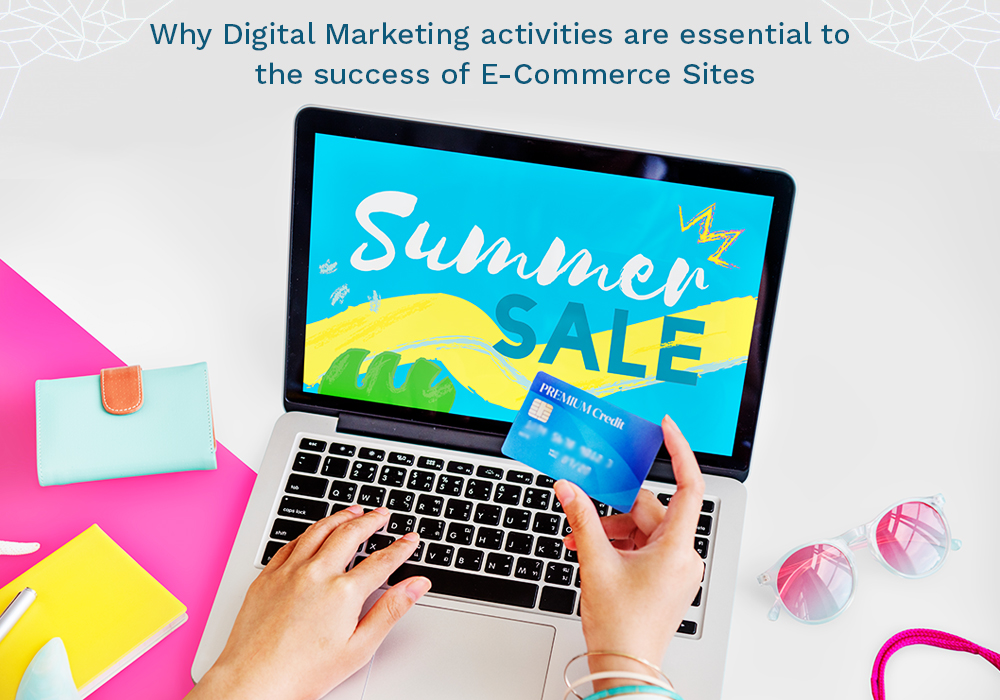
Reputation management is key as customers share reviews and their experiences with brands on social media and other review aggregators, allowing brands to listen to and monitor actionable feedback based on consumer perception.
Important Digital Marketing Channels and Activities
Activities like search engine optimization (SEO), search engine marketing (SEM), content marketing, influencer marketing, paid and organic social media marketing, e-mail marketing, and analytics are key components of Digital Marketing.
1. Search Engine Optimization (SEO)
For an e-commerce website, Search Engine Optimization (SEO) is vital. It helps increase the quantity and quality of traffic to your website via organic search engine results, ultimately resulting in higher conversions. Besides this direct impact, SEO also helps shape your user journey, considering how according to Google, user experience signals play a key role in ranking positions.
Relevant, optimized content, site load speed, website security, quantity and quality of inbound links, domain age & authority and social signals are some of the important signals search engines taken into account when ranking websites on search results.
To cater to these and other signals, a number of on-page and off-page SEO activities are critical to the long term discoverability of your website.
2. Search Engine Marketing (SEM)
Search Engine Marketing (SEM) allows you to target the keywords people search and list your website through ad placements. These ads rank before organic search listings, resulting in even higher click-through and brand visibility. An SEM campaign gives you some degree of control over targeting. You can define your target audience, and by bidding on keywords, you define your ad budgets and what you’re willing to spend on clicks. Careful monitoring of cost-per-click and keyword targeting are essential to optimizing SEM campaigns.
Google AdWords and Display Ads are the primary channels to carry out SEM campaigns – owing to the fact that Google is by far the most used search engine worldwide. By employing effective ad titles, copies and attractive call-to-actions, paid search ads are extremely effective in driving relevant traffic to your website.
Research shows that companies using Google’s Dynamic Search Ads saw appreciably higher click-through rate, greater conversions in new markets, and greater ad RoI.
3. Social Media Marketing (SMM)
Presence on social platforms today is important for brands to be discovered and drive sales. You can route traffic to your e-commerce website, or sell directly through platforms like Facebook and Instagram. Typically a mix of both objectives are the most effective. Social Media platforms are always evolving to make it easier for businesses to target their audiences and engage with them It has become much easier for brands to connect with customers through social media. Social networks are potent and Digital market professionals need to include paid social media as part of their strategy to engage with more and more customers.
Social networks are built on the premise of allowing people to share with their immediate networks, as well as the wider network as a whole. When a converter customer is happy with your offerings, they’re more likely to voice their satisfaction and share their experience, resulting in the potential for a snowball effect.
4. Email Marketing
Email marketing allows you to target individuals, but on a big scale. The strength of your email database as well as the relevance of your mail campaign affects email open rates, click through and eventual sales. Timely promotions, communicating new product launches and new developments in your company are important to make sure your brand is recalled from time to time, so when a prospect is looking for your offerings, they remember you.
Emails have an important part to play in providing a better shopping experience to the clients. Once you order or pay for your product on the website, you will instantaneously receive a confirmation email along with a digital invoice. Clients can also email questions about various products, your experience, or general information requests about a particular company. Personalised emails help the company connect with customers.
When you start segmenting clients for email marketing campaign, it becomes simpler focus your messaging and cater to the requirements and needs of your prospects.
You should have a strategic email campaign by sending out a welcome email with an engaging subject line, link, the brand story and special offers Many brands send out product suggestions based upon prior purchases and browsing history. After purchases are made, a friendly thank you message always helps.
To conclude, in today’s world, there are always a diversity of products and services vying for a consumer’s attention. Consequently, it can be rather tough for an e-commerce start-up to proliferate and grow on its own in a short span of time without active marketing efforts. Digital marketing helps a brand grab the client’s attention, with the intention to communicate the brand’s value as well as its breadth of offerings.
Want to get more targeted visitors and expand your online business? Get in touch with us for a Free website audit.
Programmatic Advertising is touted to be the next big shift in online advertising. It is the process of purchasing ad space via automated software that relies on complex algorithms, enabling accurate audience targeting and ad personalization to generate better conversions on ad spends.
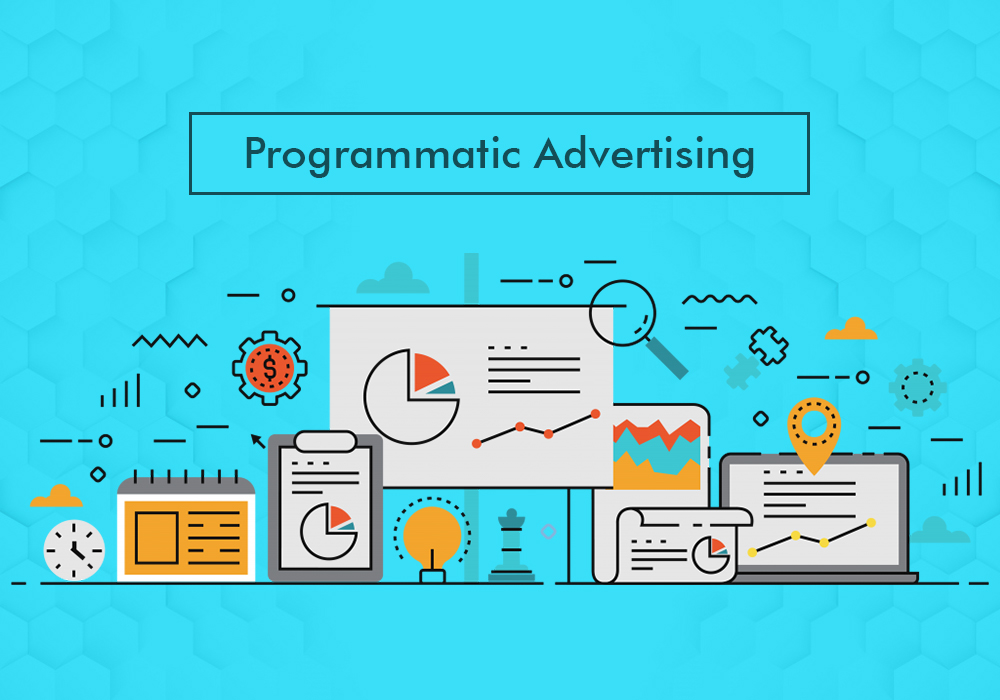
Programmatic Advertising in general refers to “programmatic ad buying”, a term advertisers use to describe the process of automated purchase of ad space. This eliminates human error & inefficient duplicity in traffic while giving maximum transparency & optimization opportunities. Consumers today aren’t limited to just one or two platforms online. They reach you through your website, other websites, emails, and multiple social platforms. Thus to reach consumers at maximum points along their digital journey, we need to break away from conventional or restrictive ad technology that targets limited platforms.
Consumers today also love to multitask. They don’t just stick to one device at a time. A typical case of watching television on a smart TV, with a tablet screen open on the side to stream or have something else running, a mobile device in hand to communicate or game is all too common. Using programmatic Omni-channel marketing, marketing messages can be delivered on all fronts. At the right time, in the right format.
Elements of Programmatic Advertising
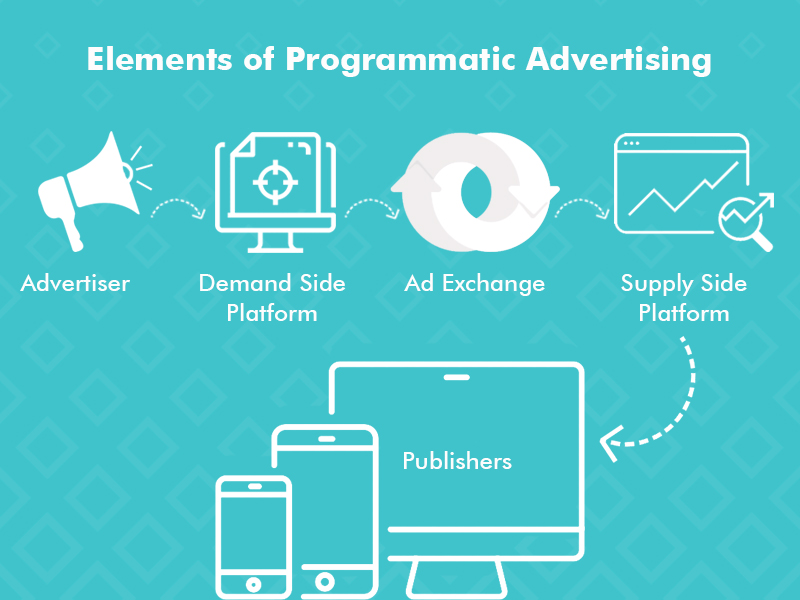
Demand-side Platforms (DSPs):
DSPs is used by advertisers & agencies to manage media buying. A campaign is created, monitored, and optimized throughout its lifecycle through here. This is where brands & agencies outline their ad budgets, and gauge how many impressions and clicks they can expect to get as a result. A DSP has access to huge amounts of data and analytics tools that helps to find the correct audience for the advertiser. Each DSP should be carefully evaluated against your business needs to determine the best fit. Some options include AOL, The Trading Desk, Rocket Fuel, and DoubleClick Bid Manager, or DBM.
Supply-side Platforms (SSPs):
An SSP assists publishers in selling and managing their ad spaces (inventory) programmatically. Publishers automate media selling, but define certain rules and make inputs to the SSP to define their strategy. For example, they select channels & tagging information and minimum selling price of each kind of ad inventory that helps advertisers gauge and select from the various options available to them. Some SSP’s are OpenX, AOL and AdX.
Ad Exchanges:
Ad Exchanges are marketplaces that connect DSPs and SSPs. Their main goal is to help advertisers buy ads from multiple publishers automatically via auctions.
Ad Server:
An Ad Server is the infrastructure – comprising both physical servers and accompanying software engines - that hosts ad creative in various formats, including video, for different platforms – websites, mobile apps and social platforms. It is used for tracking users across various platforms, rather than just a specific website which ensures the delivery of ads to target audience on different digital platforms, websites, and mobile apps based on user’s behaviour. They’re also known as campaign management platforms.
Data Management Platform (DMP):
The data management platform (DMP) is the core of programmatic advertising. It acts as a hub where data, of various types from various sources, is collected and analysed. It helps provide the best outcomes for both buyers and sellers & helps in bid decision making.
How Programmatic Advertising Works
Programmatic Advertising connects Demand Side Platforms (DSPs) to Supply Side Platform (SSPs). Publishers use SSPs to monetize their inventory and transfer data about their visitors to these platforms. The Advertisers then bid on the available ad spaces depending on the inventory that is sent to DSPs (ad exchanges) by SSPs. DSPs get all the necessary data about publishers audiences (age, GEO, device types, search histories, etc.), render ads and then deliver them back to SSPs.
Advantages of Programmatic Advertising
Programmatic helps advertisers access ad inventory directly, removing the need for intermediaries from the process that makes programmatic ad buying cheaper and more effective. The algorithms search through hundreds of available inventories & then come back with the best buy options.
It also provides a much wider range of targeting options & is not bound to a specific medium or format, which is not the case when you buy ad spaces manually. The bids are arranged individually, for each user accessing the publisher's website, which makes targeting more precise and helps advertisers reach their relevant target audience at the right time & place. Advertisers always have access to the quantity and quality of visitors viewing their ad, in addition to various analytical insights allowing them to fine tune the process wherever necessary.
Advertisers also do not need to pre-negotiate a price of a given ad unit with a particular publisher, they only pay for the impressions they receive. The number of impressions they can purchase is flexible and so is the budget, which makes the technology lucrative even for SMBs.
Is RTB (Real Time Bidding) & Programmatic the same?
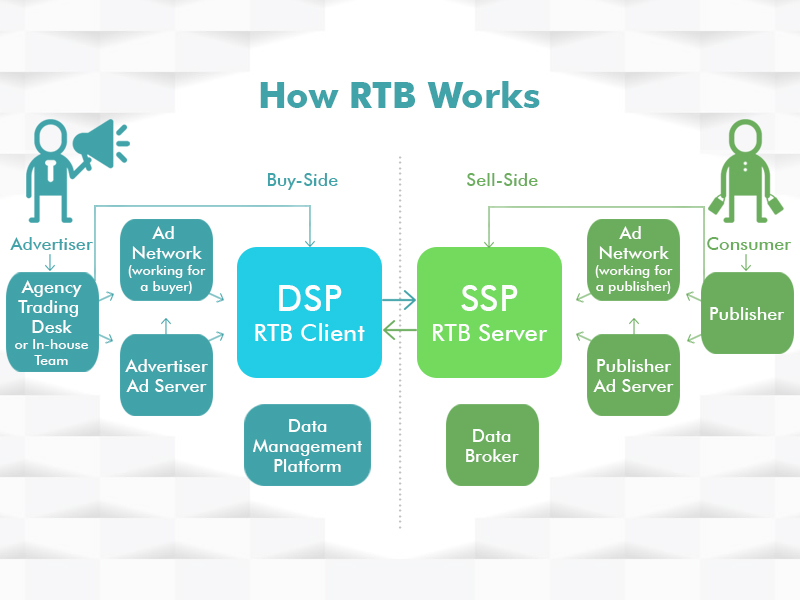
RTB is a component of programmatic bidding & serves as a platform for auction marketplaces, allowing advertisers to bid for a certain ad impression in real time. Advertisers set up the campaign & targeting and compete for an ad impression with automated bids. The ad with the highest bids wins the auction & gets placement on the webpage, while the ad budget is still available. User data is also sent along with bidding data in real-time from the browser to an ad exchange, which enables more specific targeting and directly influences the outcome of the auction. It also ensures that the ad with the right targeting parameters is shown to the user to improve the relevance of the ad.
Possible Threats of Programmatic Advertising
Brands sometimes don’t want their ads to be shown on particular websites. Websites they consider offensive, unreliable or which simply don’t fit their ethos. However, with programmatic advertising, you’re buying metrics like impressions, not a list of outlets. Even though you can blacklist websites to avoid this, it requires active monitoring and management as new questionable outlets come up from time to time, and serial spammers tend to change their domains frequently.
Both buyer & seller cannot exercise any form of control on the security of their adverts sold or bought. Both need to have robust verification processes to ensure mutual safety and, more importantly, the security of visitors.
Digital Marketing activities are crucial for companies from the hospitality sector, whether their objectives are B2B or B2C. By Employing a combination of paid and organic digital marketing activities, you can build your brand, engage your audience, increase online traffic and optimize conversions – whether signups, enquiries or direct sales. Here we explain how some of the crucial activities that fall under digital marketing – Search Engine Optimization, Search Engine Marketing and Social Media Management – are essential to grow your hospitality sector brand.
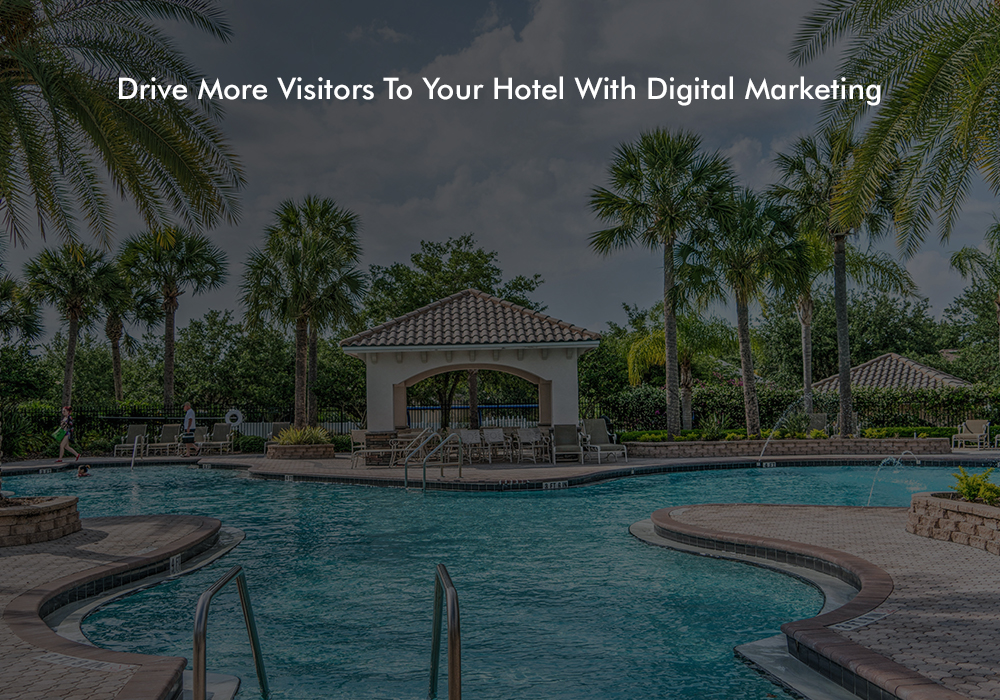
SEO (Search Engine Optimization)
Search Engine Optimization (SEO) is the process of making a website easily ‘readable’ to search engines, through a combination of on-page and off-page activities. SEO is an on-going process, which helps to increases the authority, visibility, and presence of a website organically in search engine results, when people search for terms related to the services/offer you provide and the content on your website.
The Essentials Aspects Of SEO-
Metadata
Metadata is responsible for informing search engine crawlers what your website is about, and the type of content that is being served on individual pages. Optimizing metadata like page titles and page descriptions are an essential part of On-page SEO. Active management of meta data becomes more and more important as the scope of your website grows. Your metadata is important because not only it informs crawlers about the content of your page, but also because it often appears as page preview text in search engine results.
Backlinks
Backlinks refer to inbound links to your website from external web domains. These links are crucial to the SEO of your website. Backlinks on other websites referring to your site are an absolute necessity, they indicate to search engines that other independent domains consider your website to have relevant, useful content, which increases credibility. However, it is also important to remember that more isn’t always better, quality of the backlinking website and link relevance are important factors.
Keywords
You want to rank high for keywords that are relevant to your offerings. For example, if somebody searches for ‘best hotel in Mumbai’, you would probably want your hotel to show up and leave an impression. There are many considerations to take into account when formulating a keyword targeting strategy, especially for industries like the hospitality sector, where location based results become extremely vital.
Keyword Rich Content
Having a blog with essential keywords seeded within the content is necessary so that Google can contextualize your website. Search engine algorithms have evolved enough to reward or penalize websites based on how well the content on a page matches the metadata as well as how relevant the content actually is to visitors. For example, on a hotel website, having content related to the locality, activities in and around the hotel, weather and anything that might help visitors will have a great positive impact on SEO.
Rich Snippets, Schema.org
Rich snippets from Schema.org help in labeling the HTML of your hotel's website so that search engines, including Google, Yahoo, and Bing, can better understand the content of your website and present snippets of it in different formats in search results itself. There are numerous benefits to using rich snippets, including a more attractive look of your website on the SERPs and an increased clickthrough rate.
Listing Your Hotel On Popular Business Listings
Much like online travel agencies, sites like Google My Business, Trip Advisor, Yelp and other business directories help with visibility as well as the link building component of SEO.
SEM (Search Engine Marketing)
Ever noticed those first two listings when you search for something on Google that carry little ‘Ad’ tag? Those are paid google search results. Through paid search campaigns, you can bid on keywords, and based on your competitor’s bids, ‘buy’ ad space in search engine results. Since searchers are far more likely to click on the first two to three results, paid ads tend to be a very effective strategy to drive inbound website traffic.
Google Hotel Ads
Google Hotel ads can be integrated directly into your data feeds to be automatically updated based on open inventory and the amount you are willing to spend to fill your rooms.
Location Based Hotel Ads
Location-based keywords as well as the popular “near me” key phrase have been on the rise for a few years and are extremely effective to optimize for due to their high relevance. This usually results in higher quality scores, lower costs, and more relevant ads for users. If somebody is on the move and searches for food nearby, and your restaurant happens to be in that area, your ads tend to have a far higher chance of conversion.
Phone, Price Extensions
Phone extensions within ads can increase clickthrough rates by 5% because of how direct the call-to-actions are. Some users still prefer to book over the phone rather than trying to navigate a reservation process on their cell phone or computer. A price extension is only available for first place ads but is a great way to ensure better engagement.
SMM (Social Media Marketing)
In the digital age, one of the best ways to spread the word about your hotel, its amenities, and offers & events, is through social media. Formulating a comprehensive social media marketing strategy will help you spread awareness of your brand and positively engage new and returning customers.
Invest in Content and Promoted Ads To Reach A Wider Audience
With Facebook’s monetization model, it is incredibly hard for pages to show up in feeds organically, although that does not mean you should ignore organic posting. Over time, you can build your audience and make an impact even organically. However, if you really want to target potential new customers, you will have to invest in paid advertising. The impact is immediate, and with flexibility in budgeting, you have complete control over your ad spends.
Leverage Facebook's Demographics Data To Run Targeted Campaigns
Although privacy and data retention policies have significantly changed the ways in which Facebook shares and allows advertisers to leverage user data, there is still a lot going on under the hood, which allows advertisers to effectively target their audiences on Facebook. Ads can be targeted based on location, demographics, interests, behavior, connections and more.
Encourage Check-Ins and Reviews On Facebook
Being in the hotel business, you should also encourage guests to use location tags and check-ins on photos and videos. This data is used to create destination content that takes into account location tags and reviews.
Instagram is a visual-based social network that all hotels should be using more of. Images of hotels and restaurants with all sorts of filters and effects proliferate Instagram. There’s no substitute for the visual impact these beautiful images of exotic locations have on viewers. They are shared, liked and commented on, rapidly spreading awareness and call-to-actions. Instagram usage is growing at a rapid rate and is considered a very effective platform to advertise and engage visitors. Facebook owns Instagram, so it is easy to set up paid campaigns on both platforms simultaneously.
What Your Posts Should Be About
Once you have set up your Instagram account, think about what distinguishes your hotel or restaurant from the rest. Post about your strengths and what makes your hotel unique! Also post about any happenings and events taking place at your location, regular updates show that you are an active, bustling business.
The Periodicity Of Your Posts
In general, the more you post the better. However, a fundamental mistake many Instagram handles make is to mistake quality with quantity. Post relevant, interesting content. Do not post too many ‘fillers’ just for the sake of it, people tend to unfollow handles that make them scroll unnecessarily due to low quality posts.
Use Smart Hashtags
Hashtags are one of the most effective ways of getting new Instagram users to find your account. Search for smart, trending hashtags through a mixture of awareness of what is happening as well as effective trend discovery tools.
Insta stories
To create successful Instagram stories, the key is to stay true to the personality and style of your business. Stories last 24 hours then disappear; they are mini doses of entertainment, updates and information that followers scroll through with steady regularity.
Post Tweets That Are Likely To Get Noticed
You do not want to lose subscribers with incessant sales, but most people follow brands on social networks specifically to receive promotions and discounts. It is best not to disappoint them.
Incorporate Rich Content
Imaging can be an effective way to attract attention. Use photos and videos to present your offers visually and more convincingly.
Incorporate Tweeting As Part Of Your Customer Experience
To encourage customers to use Twitter when at the hotel, you can print your Twitter ID on key cards. Replying to positive tweets and responding to criticism is also a good approach
LinkedIn for Smaller Hotels
As a small hotel, you may not have a dedicated resource for managing your social media accounts, but it is important to maintain a presence on LinkedIn. The number of posts is not as important as your regular presence on this social media channel.
Build Your Brand & Community
It is imperative that hotels create their own business page, where they can list their brand and give an overview of what they has to offer. Find groups that complement your hotel profile, such as local attractions, and travel/lodging groups, to build your community.
Cultivate Good Relationships
Connect with event planners, wedding planners, and anybody who can bring fetch you more customers. The potential is endless.
Email Marketing
Email marketing is the channel with the highest return on investment, regardless of the type of industry. This should be one of the top priorities of your overall marketing approach. The best way to leverage email marketing is to have a drawn out strategy over a period, to communicate seasonal offers and promotions, update visitors on their booking information and other useful information pertaining to their trip, and solicit feedback from time to time that is vital to make ongoing improvements to your processes and services.
General Data: All In One Solution For Your Data Management Needs
According to research, filing a single file requires 5 minutes on an average. This average time doesn’t take into account time spent on document search and its retrieval.
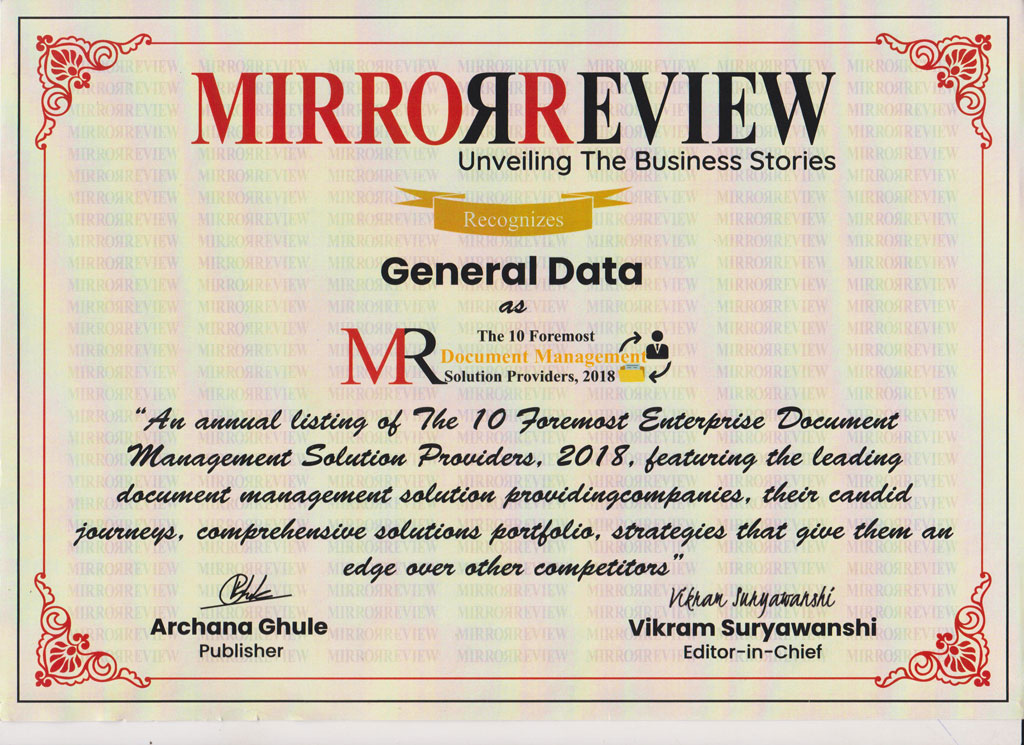
Spending time on printing and storing paper documents is hugely wasteful for businesses. Furthermore, with increasing physical paperwork, you need to account for opportunity cost of real estate space used and the added purchase of cabinets. Also there is a high risk of document loss through misplacement or damage, when they are retained in physical form. To reduce the need to manage documents physically, General DataP. Limited was established.
General Data, Managing Corporate Data Immaculately
Established in 1984, General Data Private Limited is an Indian company specializing in document management, software development and engineering analysis. The company has an extensive repertoire of high-end international projects on advanced platforms. Their IT strategy and infrastructure is firmly aligned with the rapidly changing demands of the software industry as well as unique business needs. The company’s strong points include their systems and methodologies and commitment to business goals.
CEO With A Vision To Bring Significant Changes
CEO of General Data, Aditya Halan, has an industry experience of more than 10 years where he worked in various domains ranging from eCommerce, IT Infrastructure, eGovernance, DMS and Workflow, Mobile App Development, Software Development, etc. Aditya has built General Data from ground up to what it is today. His role in the company is not limited to just Project Management and Execution, Creating Relationships, End to End Growth of The Organization, Business Development, Account Management, Finance and Administration and Customer Satisfaction. Aditya has an intimate knowledge of the IT industry which has helped him immensely while leading the company.
Segments Of Operation
General Data has developed a strong position for itself to offer products and services in four segments–
Information Management:
This segment is related to document, data, information handling and processing. The company scans and digitizes physical documents, and helps clients archive them and manage records.
Web Services:
General Data has a strong command over .NET and PHP stacks. Using these, the company undertakes a spectrum of website design and development projects. The company also Web Applications Development, Content Management Systems, Domain Registration, and Website Hosting.
Software Development:
General Data truly understands the client’s requirements when it comes to custom software development. The company is very careful of their requirement analysis process, which has allowed them to take up a diverse range of Custom Software Development projects, both on-premise and cloud based, and Mobile Application Development.
Digital Marketing:
General Data has their footprint in the digital marketing as well. Digital Marketing is defined as the scope of activities that increases the company’s visibility online as well as defines the corporate communication and branding strategy in the digital space. The company oversees the digital marketing of the clients to ensure their presence in the digital space which also includes Search Engine Optimization (SEO), Search Engine Marketing (SEM), Social Media Management (SMM and SMO), and Email Marketing.
Making A Mark In The Industry
General Data’s digitization service offers high quality and swift conversion of physical documents into electronic format, making the information contained therein easily searchable and instantly accessible. The company has the finest human resources and use latest technology, support instruments and software for the process, which is the key factor for the company’s success in the industry. For quality assurance, company uses high-end scanners and other technologies like Optical Character Recognization (OCR), Document Management Solution (DMS), and Automatic Document Feeder (ADF).
Privileged Clientele
General Data has served over 50 world class clients across various segments like Information Management, Web Services, Software Development and Digital Marketing. Currently, the company serves clients across domains like Banking & Financial Services, Defense, Education & Training , Government & Public Sector, Media & Entertainment, Retail, and much more.
Future Endeavours
General Data is a company with its future plans already set beforehand. They intend to expand and offer solutions in the global market more and more in the Middle East and Hong Kong, where some projects are already running. Furthermore, to stay at the top, the company has some internal plans set up for the near future–
Recruitment and Retention of the Best Talent:
One of the major challenges of a growing company is talent acquisition. Great talent is the most important fuel for the company’s growth and creating a good core team, especially when it comes to software engineering. General Data has plans to successfully establish a perfect pipeline for that.
Create and Keep a Close Eye on KPIs:
An effective CEO understands the key goals of the company and the key metrics that tell everyone if the strategies laid out by the team are on track. To create relevant KPIs (Key Performance Indicators) and monitor them closely is the foremost plan of the company to ensure the creativity stays alive.
Engage Team In Discussion:
To keep creativity alive, teams must be engaged in discussions and planning sessions. To take their opinions and evaluate them with\out bias is of utmost importance.
From The CEO’s Desk
The company’s motto ‘Service With Integrity’ makes them stand apart from the competitors and also the amount of dedication and virtue they show towards the client. According to Aditya, to survive the current competition in the industry, for the young generation, there are some steps to follow–
- Ensure client satisfaction as the paramount factor
- Ensure quality rather than quantity of deliverables
- Believe in yourself
- Take action
- Learn from mistakes
- Know your customer
- Understand the industry through data and insights
- Surpass the expectations
This is of course one of the first and most important questions any client we pitch our Digital Marketing - and in particular Search Engine Optimization services – to asks us.
Luckily, The Website Group, in association with ahrefs, have put together empirical data, which is in line with our own findings, in a well drawn up infographic.
The study finds that it typically takes at least 1 year of SEO activities to rank on the first page of Google search results for longer tail, lower search volume keywords. While positions 1-3 usually take a minimum of 2 years, with the median lying somewhere in the 3+ years range. Domain Rating (DR) was the biggest supporting indicator of this correlation. A high DR is vital for prime search result placements.
We’re really thankful for a study like this, it draws upon findings from a significantly large data set and makes it easier to see the correlation between effective SEO activities, time spent on optimization, and higher SERPs (Search Engine Ranking Positions).
Here’s the infographic: 
Credit: https://thewebsitegroup.co.uk/infographics/how-long-to-rank-google/
With the General Data Protection Regulation (GDPR) coming into effect on the 25th of May 2018 in the European Union, many Indian startups and enterprises have been left wondering whether General Data Protection Regulation (GDPR) is going to have any impact on organisations outside European Union(EU). Here’s a brief guide to GDPR’s effect on Indian origin websites, applications and companies in general.
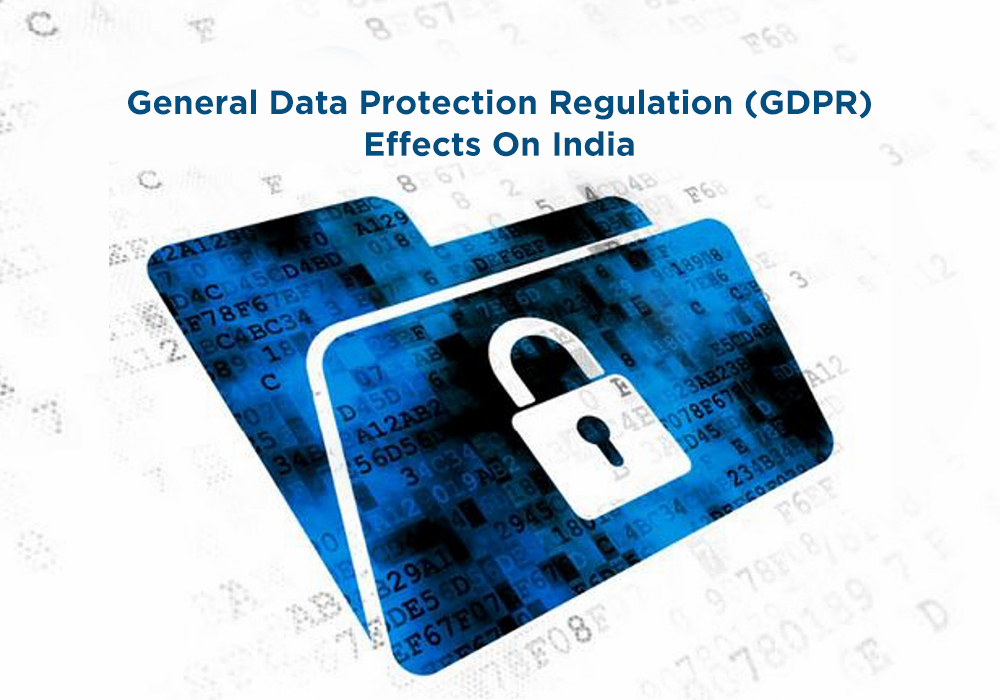
What is GDPR & what does it do?
The General Data Protection Regulation (GDPR) is designed to give citizens in the European Union (EU) more rights to control their personal information and holds companies handling their data - wherever they may be or regardless of where the data is processed - liable for violations. The bottom line is clear — an organization comes under the purview of GDPR guidelines if it offers services to EU-based customers or mines their personal data. Non-compliance will cost the organization/company a fortune, with the highest penalty being 20 million Euros or 4% of annual turnover — whichever is greater.
How does GDPR effect
(a) businesses that operate in India:
Indian businesses that manage IT processes for their European clients will naturally have access to a variety of data, including personal data, which brings Indian enterprises under the purview of the GPDR & makes it mandatory for them to implement data privacy and security frameworks compliant with the outlined regulations under GDPR.
The business function impacted the most by GDPR is marketing. With the GDPR in effect, marketing through email to EU citizens without their explicit permission will become a thing of the past.
Under GDPR, businesses will need to obtain clear & explicit consent from every consumer by way of ‘opt-in’ messaging. This consent is needed at the point of data collection, and the consumer should also have the right to request it to be deleted or “forgotten” at any given time. The new regulation will also empower the consumers to have the right to know how and to what end personal data will be used for by a business. GDPR is also expected to completely transform Digital marketing.
(b) individuals located in India?
In the effort to update privacy policies and comply with GDPR, businesses around the world (including India) have decided not to limit these changes only to their EU based users.
In the interests of pragmatism, administrative ease and the chance to appear ethical, businesses are making these safeguards available globally, rather than adopting country-specific policies. This has resulted in Indian nationals enjoying safeguards and controls with respect to their personal data that were previously not available to them under Indian data privacy laws.
That said, it is important to note that these privileges are only available to Indian nationals under contract and they will not be able to seek protection under GDPR. Hence, any enforcement or claim for breach will definitely be under contract and, to the extent available, under Indian data privacy laws.
According to a Deloitte survey conducted in collaboration with the Data Security Council of India (DSCI), large organisations with more than 10,000 employees (21% of respondents), embarked on their GDPR readiness journey in 2016 itself.
Whereas 43% of organisations started their GDPR readiness journey only in late 2017 or early 2018, the results showed.
Chrome ceased showing ads on websites that display non-compliant ad experiences beginning February 15. Experiences such as full-page interstitials, automatic sound and flashing ads are all on the list of banned ad types.
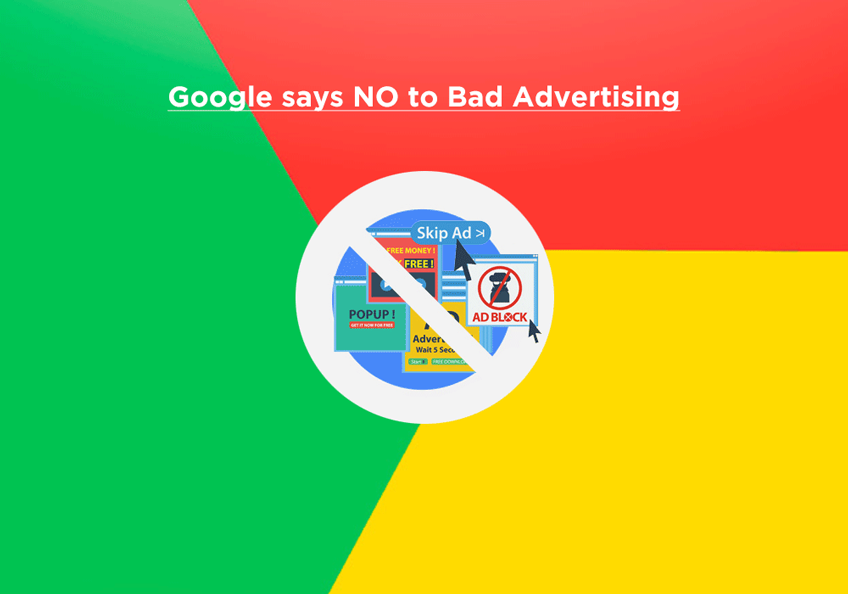
Ad Experiences Report
Site owners can access a review of their site’s ad experiences in the Ad Experience Report. Ads will be marked as “Warning” or “Failing.” Failing assessments will not be made based on one ad experience, but rather will be based on the percentage of total page views that contain these experiences.
- 7.5 percent in the first two months of the program.
- 5 percent in the four months following.
- 2.5 percent thereafter.
If violations remain unfixed and persistent, Chrome will block all ads on the site in question. When violations are fixed, site owners can submit their sites for review in the Ad Experience Report.
Read the full article here- https://marketingland.com/google-confirms-ad-blocking-chrome-will-start-february-15-230621
What are Internal & External links?
Internal Links are hyperlinks that point at (target) the same domain as the domain that the link exists on (source). In layman's terms, an internal link is one that points to another page on the same website.
External Links are hyperlinks that point at (target) any domain other than the domain the link exists on (source).In layman's terms, if you link to another website, the link is considered an external, outbound link.
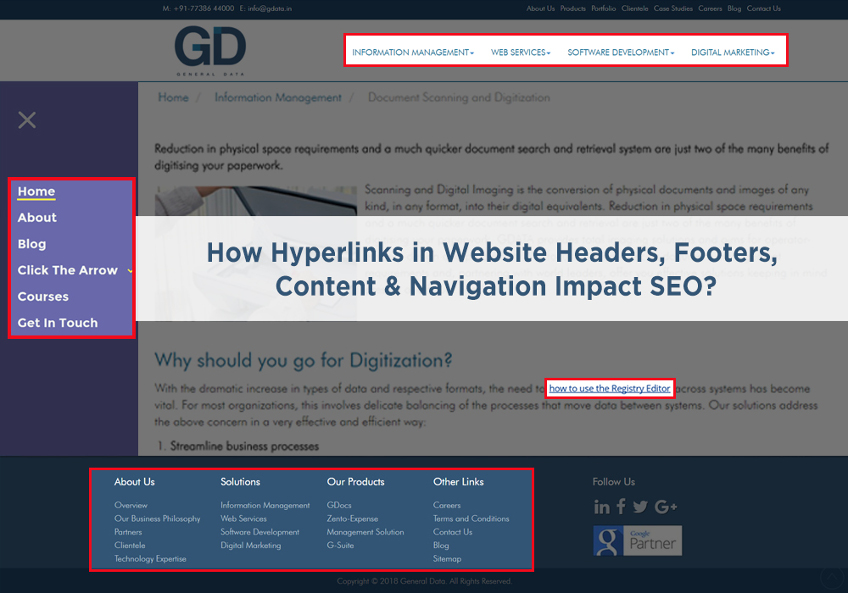
In order to build a stronger linking structure it is important to understand what the different types of links there are and their characteristics.
You should ask questions like what’s the difference between an on-page link that’s part of your page content and a navigation menu link? Which one is more valuable? What if a page has two in-content links of which one is an image and the other is text? How do they differ? We’ve addressed some the most important questions related to how hyperlinks affect SEO below:
Q. Do some on-page links matter more than others?
1. Content links tend to matter more
A link in your page content has more value than that in the navigation because a navigation link is usually persistent site-wide, whereas unique links on individual pages are more specific to what a user is currently consuming.
2. Links in footers often get devalued
A link in the footer may not carry much weight internally if you don’t have the same link in primary navigation, or in the content of your page. Footer links like Privacy Policies & Terms & Conditions are still important, but not from an SEO point of view as much as educating users about how they interact and browse the site.
3. Most visible links may get more weight
It seems that if you have very small fonts,or very tiny links which are neither as accessiblenor obvious to your visitors, they might also not carry as much weight in Google's rankings. Usability and accessibility play a key role in Google determining where your site ranks in display results.
4. On pages with multiple links to the same URL
Consider two pages ’A’ & ‘B’. If there are two links on a page ‘A’ pointing to the same page ‘B’, then page ‘B’ will only inherit the value of the anchor text from the first link on page ‘A’, not both of them. This is true for both external & internal links.
Q. Are external links affected by link location/type?
In-content links are more valuable than footers or navigation links
Generally, external links in the content area are more valuable than external links in the footer or navigation.
Q. Is there any difference between external links that open in a new tab or in a new window versus links that open in the same tab or same window?
As of this posting Google is believed to be indifferent towards how external links are opened, but bear in mind Google stresses User Experience as a big influencer of SEO rankings.
Consider this before deciding what to opt for:
Same Tab Pros
- Cleaner browsing experience for users
- Better internal navigation if you ever want to click the back button to see the previous page (rather than looking for the old tab you had open)
Same Tab Cons
- For users who don't know about [right click > open link in new tab], if they clicked an internal link which opened in the same tab, they would lose their place/be directed away from the current page
New Tab Pros
- Allows readers to open contextual resources without losing their place in the page they are reading
- Useful if you want to open something but not read it right away
New Tab Cons
- If a user opens a page in a new tab, that leaves the first tab open. After 30 minutes,the user could go back to see what the tab was&take new actions and trigger a new session but in theory it was the same session
Q. Do text links or image links with alt tags carry more weight?
Text links do seem to perform better & get more weight than image links with alt attribute; in fact they seem to perform better than JavaScript links and other types of links. But it is important to know this, many times we see websites use an image that links or points off to a page, immediately below there usually lies a caption with keyword-rich anchor text pointing to a page as well. Google treats the first link as the primary link, and it will be the alt attribute of this image that passes anchor text unless this is all one href tag, in which case you do get the benefit of the caption as the anchor.
Q. Multiple links from the same page- only the first anchor counts
Just like with internal links, only the first anchor text is counted. Suppose a website ‘A’ has two links from website ‘B’, then only the top one that Google first sees in the HTML of site’B’ is considered rather than where the links are organized in the site ‘B’ as it is rendered visually.
‘70% of the links clicked on by search users are actually organic’, this stat highlights the amount of traffic & exposure your website can get by employing Search Engine Optimization. With over 200 factors comprising Google’s algorithm, SEO is complex yet scientific. The ever-dynamic nature of SEO makes it more challenging. Search engines are evolving at a rapid pace and we as digital marketers need to ensure we are completely on top of them and understand the changes they undergo from time to time. Here’s a list of the most anticipated and influential changes coming to SEO in 2018!
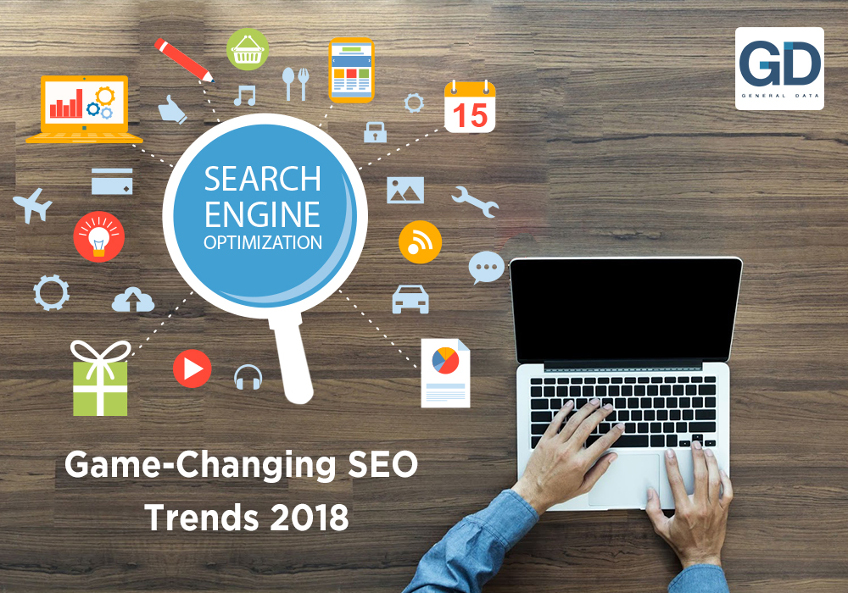
Voice Search is Beginning to Dominate
According to a Google report, 55% of teenagers and 40% of adults are using voice related search on a daily basis. Voice Search technology presents a big opportunity in changing how we interact with search engines and devices. According to Google, 1 out of 5 searches already come from voice queries.
This changes the search market and we’re expecting to see an even bigger shift towards voice search in 2018. When we search on Google, Bing, etc., we search using improper &trimmed sentences and focus more on keywords, as opposed to typing entire phrases or questions. We don’t type our searches as we would say them. It’s unlikely that you speak to your device as if you were speaking to a human in everyday conversation, and more often than not, the results yielded are absolutely on-point.So, what does this mean for us digital marketers? Well, the biggest shift relates to our keyword strategies in what we wish to rank for. SEO Yoast has written a superb article on exactly how to prepare for this.
Linkless ‘Backlinks’
Linkless ‘backlinks’ essentially refer to search engines qualifying backlinks for keywords and phrases that do not actually contain a link. For example, if a website referenced the phrase ‘General Data Pvt Ltd’ but didn’t actually link to anything, this would be a linkless ‘Backlink’. Over recent years, search engines like Google and Bing have developed the ability to judge a website’s reputation using any reference to a brand, anywhere on the internet, provided that it is mentioned in the referring website. In 2014, Google filed a patent for this under the term ‘implied links’, and it is thought that 2018 will be the year that Google will implement this.
Featured Snippets
Featured snippets are designed to fundamentally give a concise, clear and comprehensive answer to the question the searcher is asking for. Whenever a user asks a question in Google Search, we might see a search result in a special featured snippet block at the top of the search results page. This featured snippet block is a summary of the answer, extracted from a webpage, plus a link to the page, the page title and URL. The summary is a snippet extracted programmatically from what a visitor sees on your web page. This is how featured snippet works. When search engines recognize that a query asks a question, it programmatically detects the pages that answer the user's question, and display it as a top result as a featured snippet in the search results. A Featured Snippet is used to draw user attention to the results page.
Personalised SERP Developments
With more and more users looking for that personal experience on almost every platform they use, Google has been pushing the development of Personalised SERPs. Personalized search results are the results a user sees in a search engine that aren't just based on the traditional ranking factors (such as the relevance of web pages to the search term or their authority), but also on the information that the search engine has about the user at that particular time, such as their location, search history, demographics, or interests. This is how Personalised SERPs work. When a user searches something for the first time, by default the search will unbiased. Once the user clicks on a specific link, that link will likely become that users preferred ‘entity’ and so it is only when the user again searches for that term, then the search engines will likely rank the previously clicked website higher. The key here is to ensure you are the entity the user clicks on first.
Survival of the Fastest
It has been found that 40% of users will abandon the page if it takes over 3 seconds to load. Loading speeds are everything when it comes to providing content to your audiences. Not only is this major ranking signal to search engines, it is also a major UX factor. Users want the content, and they want it fast! Search Engines prioritize site load speed accordingly.
Structured Data
Structured data is an HTML markup in the form of code. For example, you could use it to list all the important data regarding an electronic product such as the number of reviews, average rating, specifications, features, availability, pricing and so on.
Using structured data in your pages will give the users the ability to showcase a snippet, for example:
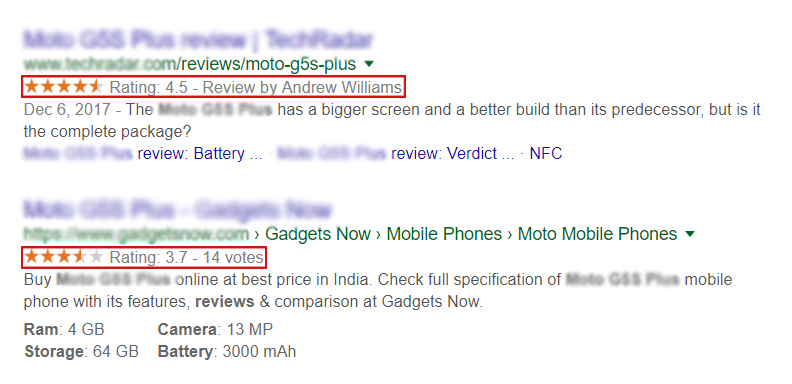
Google’s search pages would look like the picture below, a few years ago -
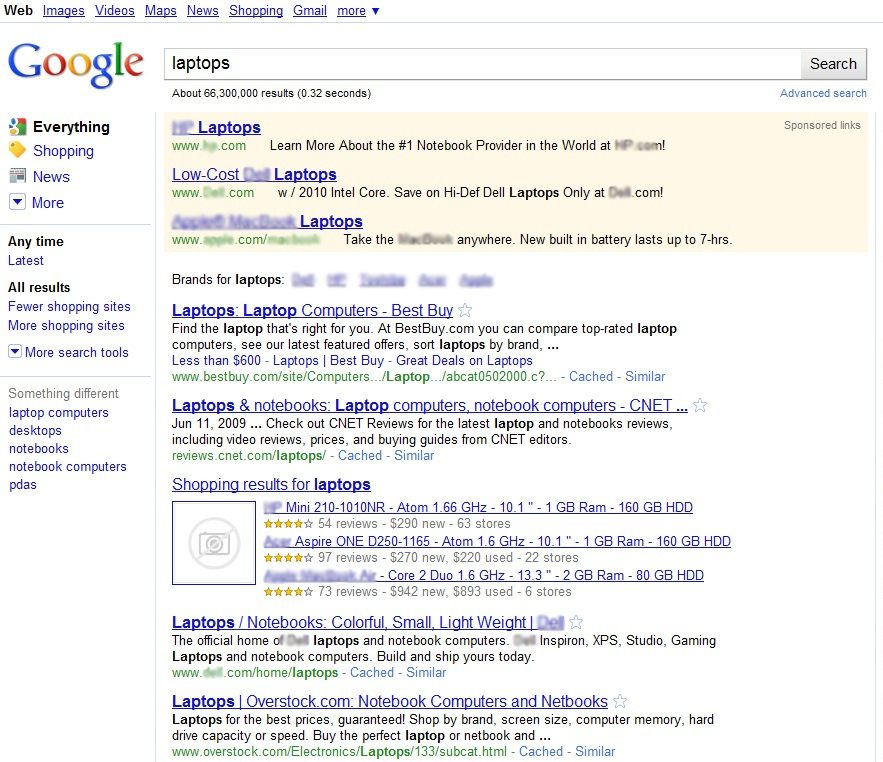
As you can see in the image above, Google would display a long list of boring and uninviting blue links. These days, however, Google’s SERPs look a lot different. They have now evolved into well-formatted pages containing a host of useful information for almost anything you search, and often without the user even having to click a link as discussed in the ‘featured snippet’ section.
We expect many more SEO changes to come this year. Staying updated with new SEO practices & tips is the key to remain one step ahead of your competition.
You might have heard the term ‘Breadcrumb Navigation’ and even seen it on many websites in the following manner:
Breadcrumbs serve two purposes. From a visitor’s point of view, they visually help identify exactly where on the website they are. They also help search engines like Google better index your website and make hierarchical sense of your website structure, enabling structured data and improving your site’s internal linking structure.
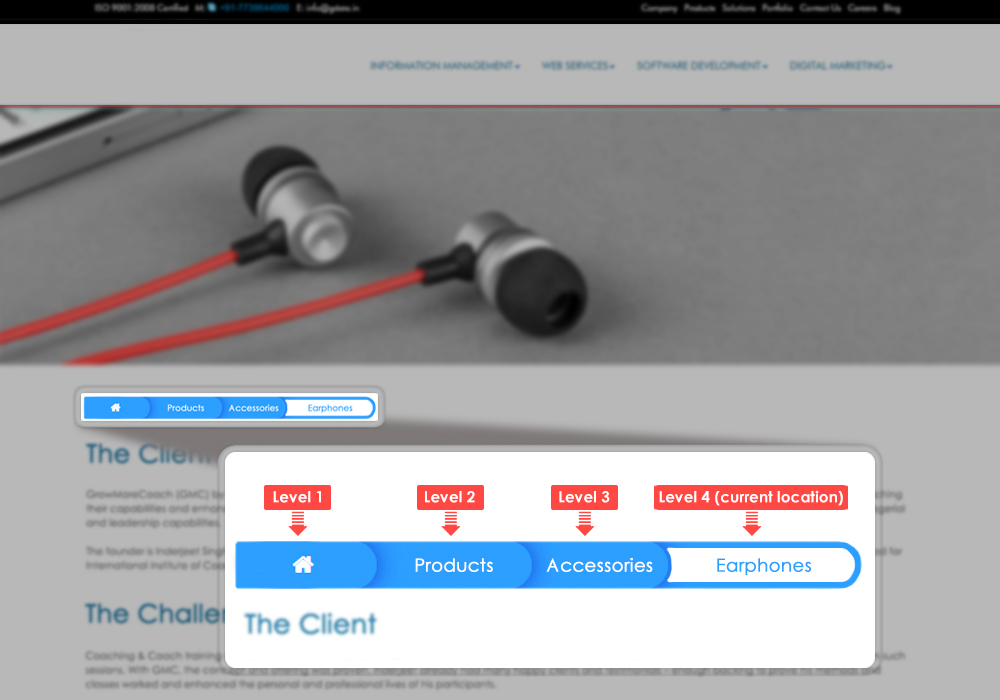
Breadcrumb Benefits
- Visitors take fewer steps when navigating from section to section
- Breadcrumbs clarify site navigation that shows visitors where they are on a site's hierarchy of pages without having to examine the comparatively less semantic URL structure
- Breadcrumbs use space effectively
When should you use breadcrumbs?
Breadcrumbs enhance the User Experience if you split content into sections and subsections grouped by related categories. If content on the website isn’t grouped, breadcrumbs aren’t as effective, but it usually doesn’t hurt to have them anyway.
Breadcrumb Types
Breadcrumbs can indicate a page’s position, pathway, or characteristics.
- Position: Breadcrumbs indicate each page’s position in relation to others, when a website has more than two levels of navigation
- Pathway-based breadcrumbs: These show every step of the path the user has travelled to reach his or her current destination
- Items grouped by characteristics: E-commerce sites often make use of breadcrumb to organize product categories and make it easy for users to move between categories, end products, and informational pages
Breadcrumbs and User Experience (UX)
For both mobile and desktop, breadcrumbs in websites make it easier to gauge usability. When designers do not provide a breadcrumb trail, users click on embedded links or use the back button. The web browser’s “Back” button is history-based (that is, it’s based on how the user has landed on a particular page) whereas breadcrumb links are hierarchy-based.
Example implementations of Breadcrumbs
- Apple puts breadcrumbs in their footer links area instead of just before page content
- MSDN Docs uses arrow icons, but the last link includes a drop-down menu with extra pages to encourage further browsing
- TutsPlus incorporates breadcrumbs into their blog with primary and secondary categories
Breadcrumbs and SEO
Google suggests enabling breadcrumbs to indicate a page’s position in the hierarchy of your site. Schema.org recommends using a consistent breadcrumb vocabulary for coding. Providing access to all site pages is a practice search engines favour. They lower bounce rates and add structured data by improving your website’s internal linking structure.
If your website is powered by a CMS, you’ll probably find a readymade plugin that’ll make setting up breadcrumbs a simple process. For websites that have a compelling navigation system in place, breadcrumbs enhance usability &browsing experience.




















